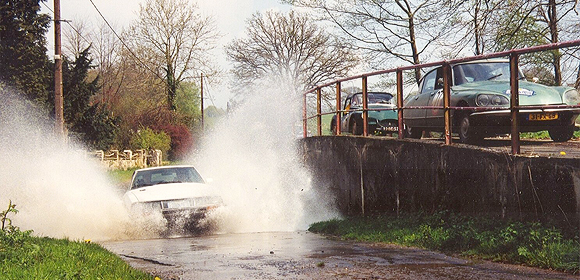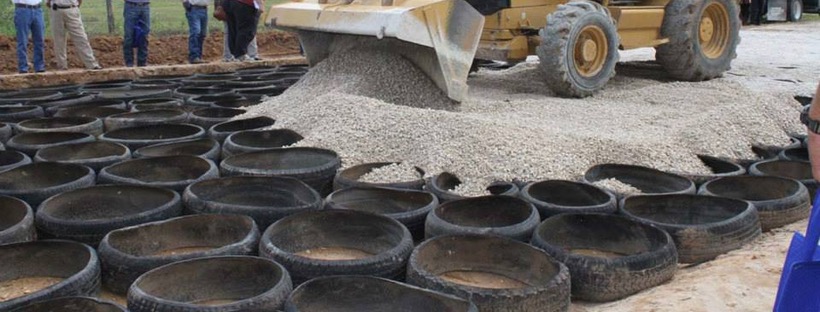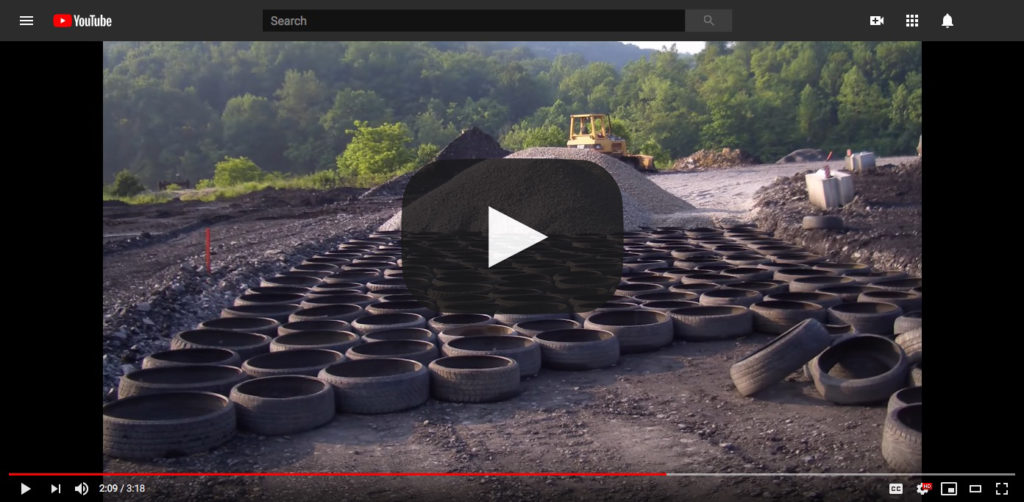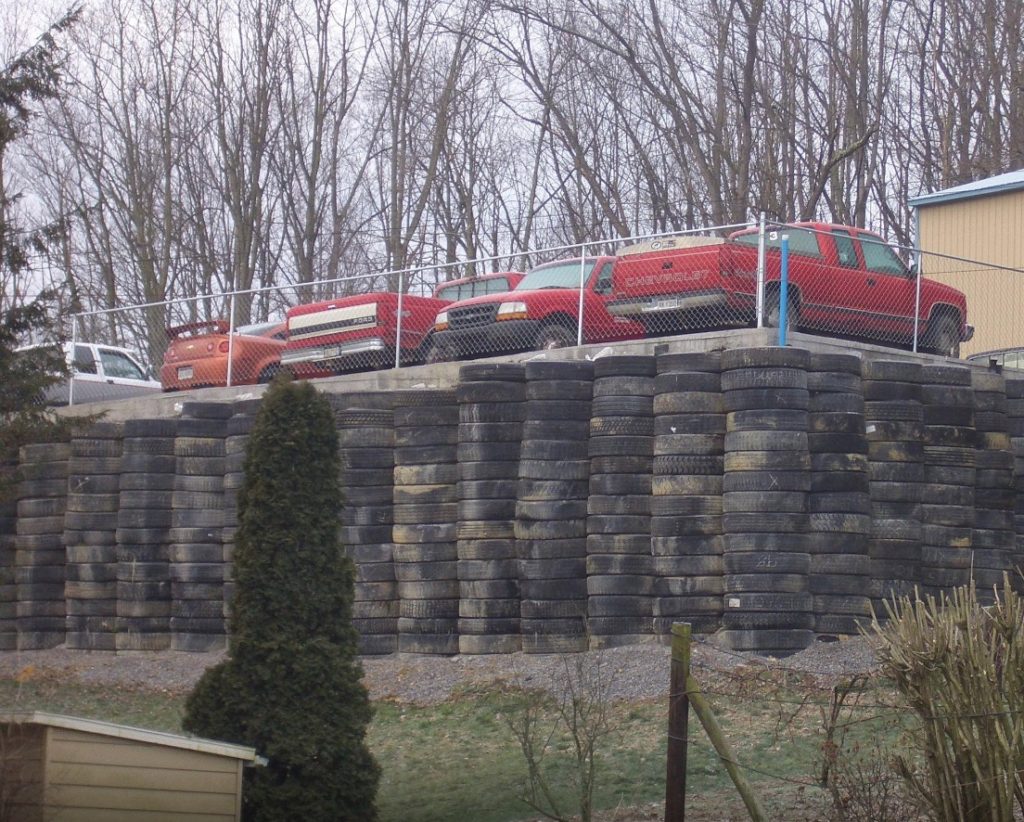Given that Citroën no longer offers hydropneumatic suspension, maybe we can work on fixing roads?

With potholes becoming increasingly common, one innovative company has found a solution to road construction that promises to greatly reduce potholes from forming. Mechanical Concrete uses old tires in the roadbed to constrain gravel that can shift due to dampness and extreme forces placed on it such as heavy trucks.

The simplicity of Mechanical Concrete makes it a forehead thumping idea. The first time engineers and contractors see it, the palm of the hand thumps the forehead and they exclaim; “Why didn’t I think of that?”
It began in September 2006 when Chuck Richards was the West Virginia Division of Highways Doddridge County Maintenance Superintendent. He and his crew rebuilt a section of rural Morgan’s Run Road using Mechanical Concrete. That part of Morgan’s Run Road would flood 3 or 4 times a year and would need complete reconstruction.

Regular construction of unpaved roads depends on the use of compacted, graded stone to achieve its strength. In layman’s terms – this means that very fine particles of stone are mixed with larger pieces of stone and a little water is added and they are compacted together into a relatively solid stone matrix using a heavy roller. Once this compacting is accomplished and the road is dried out; it can support a fully loaded truck tire or over 100 pounds per square inch of external – pressure. This works just fine until the rainy season arrives or the winter freeze-thaw cycles being. Then what happens is the rainwater begins to wash away the very fine particles of stone and leaving the other larger particles with no solid lateral support and the solid stone matrix gets holes in it. Then, as soon as a vehicle passes over the road it begins to sink. As more traffic uses this portion of the road, it becomes a pothole or a rut or the road edge collapses.

Mechanical Concrete has been reducing maintenance on unpaved roads by 75% or more because it resists water damage. It can also serve as a base for paved roads, keeping the underlying base to the payment intact and thereby giving more solid support to the asphalt road surface.
Check out the video here:

Today Mechanical Concrete is in use on public and private rural roads, driveways and industrial haul roads in Texas, Arizona, California, Ohio and Monongalia County, WV.
It can also be used for embankments and walls.

Since the process is so simple to implement in any type of road construction, and given the vast amount of used tires readily available, we wonder why its use is not more widespread?

Title photo of SM splashing courtesy of Ronald Kienhuis.
